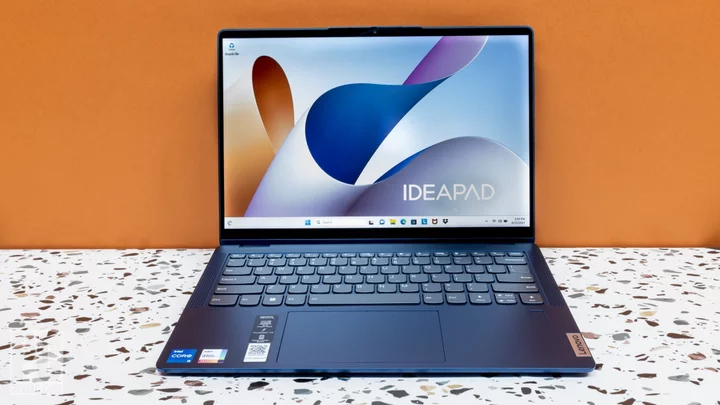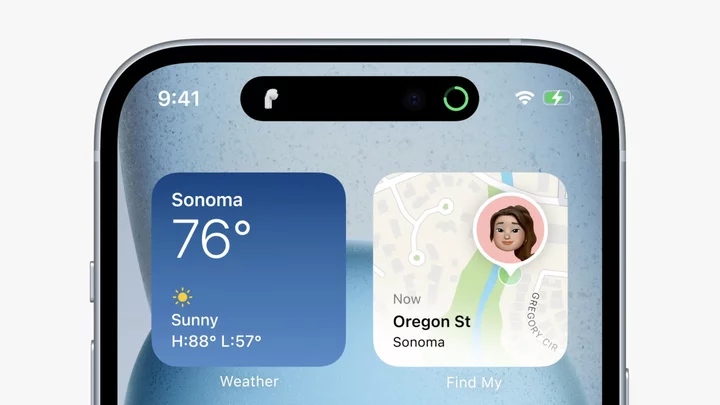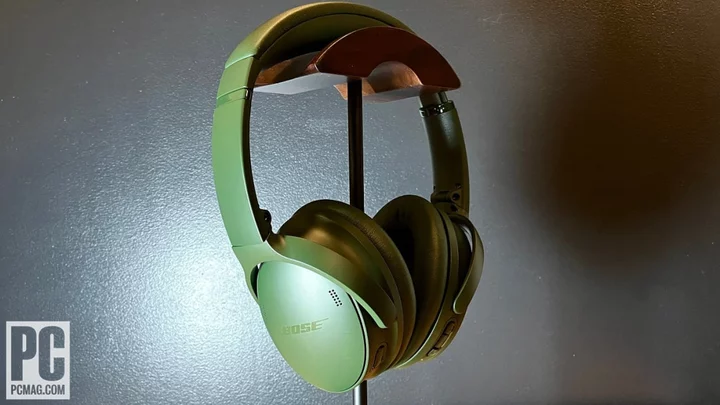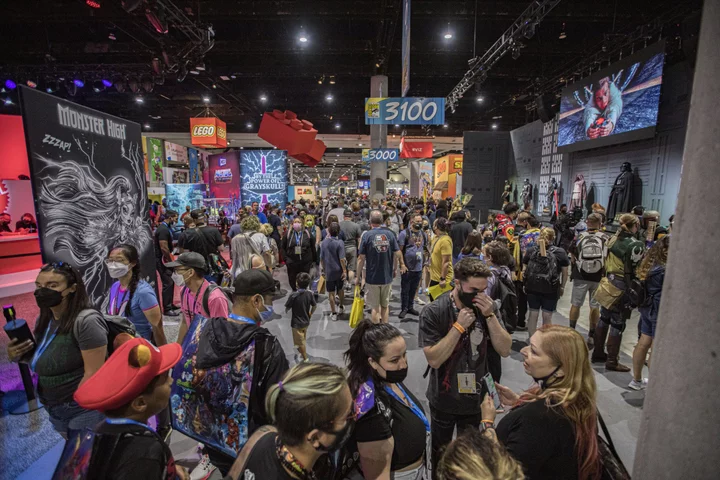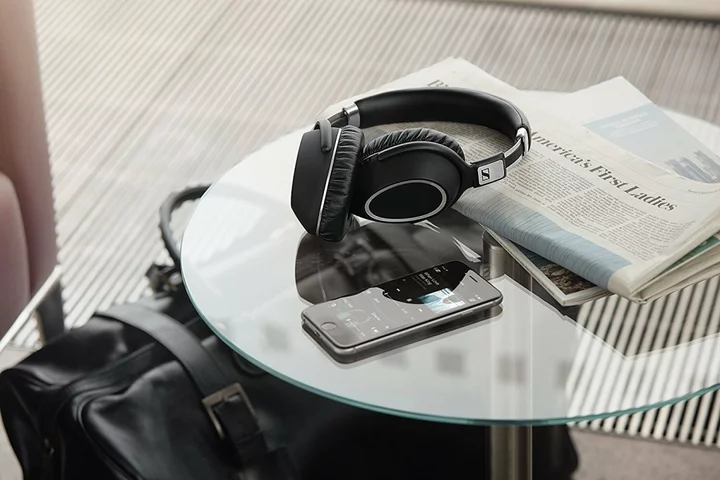The Lenovo IdeaPad Flex 5i 14 (starts at $849.99; $899.99 as tested) has long been a favorite 2-in-1 convertible around these parts for combining high performance and build quality with an affordable price. This year's version offers the same metal-and-plastic chassis as the previous model while putting a 13th Gen Intel Core processor in the mix. The 16:10-aspect-ratio display is the perfect size for flipping between laptop and tablet modes, providing enough workspace in classic-laptop mode without feeling too awkward or cumbersome as a tablet. While the screen's brightness and color coverage are still mediocre, the battery life of this year's model is much improved. The IdeaPad Flex 5i 14 remains a solid choice for 2-in-1 buyers on a budget, but Lenovo has only itself to blame for its missing an Editors' Choice recommendation: The company's midrange Yoga 7i 14 is a better value at only a slightly higher price.
The Design: Metal and Plastic in Deep Blue
Lenovo currently offers two preconfigured or fixed models of the Flex 5i 14. The starter is $849.99 (discounted at this writing to $605) and combines a Core i5-1335U CPU (two Performance cores, eight Efficient cores, 12 threads) with 8GB of RAM, a 512GB solid-state drive, and Intel Iris Xe integrated graphics. The only change to our $899.99 test unit is doubling the RAM to 16GB. The 14-inch touch screen features 1,920-by-1,200-pixel resolution and is rated for 300 nits of brightness. Upgrades not offered that we'd like to see are a higher-resolution panel (certainly not 4K at this size, but 2.8K would be nice) and an option to step up to a Core i7 chip.
(Credit: Joseph Maldonado)Lenovo offers two color options for the IdeaPad Flex 5i 14, Abyss Blue and Arctic Gray. Our review unit was outfitted in the former. It's an attractive deep blue, but I'm not wild about the contrast of the gray keyboard; standard black keys would have been a better pick, to my eyes.
The lid is aluminum, but the rest of the chassis is made from plastic. That's not surprising at this price, and the keyboard deck feels fairly rigid. There's some flex to it but nothing worrisome, and it provides a solid base on which to type. The keys themselves have a firm feel with the perfect amount of travel for an immediately comfortable typing experience. The keyboard isn't on the level of Lenovo's ThinkPads, but it's better than most of what you get in an under-$1,000 laptop.
(Credit: Joseph Maldonado)The plastic touchpad lacks a glass coating but still offers a smooth surface for swiping. It's buttonless but has a snappy, satisfying click. Compared to the almost silent keyboard, however, the loud click of the touchpad might make you a less-than-popular passenger on an airliner or in a quiet library.
The Flex 5i 14 measures a compact 0.7 by 12.3 by 8.9 inches, matching the Dell Inspiron 14 2-in-1 (0.7 by 12.4 by 8.9 inches) and a fraction deeper than the Lenovo Yoga 7i 14 (0.68 by 12.5 by 8.7 inches). It also equals the Inspiron's weight at 3.5 pounds, a tad heavier than the 3.2-pound Yoga 7i 14 or the last IdeaPad Flex 5i we tested, which was 3.3 pounds.
A Right-Sized Screen
As we noted earlier, the touch display's 1,920-by-1,200 resolution is sufficient for the panel size but not as sharp as what you get on some other 14-inch models. (The baseline Yoga 7i 14, for example, offers 2,240-by-1,400-pixel resolution, with an option for a 2,880-by-1,800 OLED panel.) Text looks crisp, if not as inky black or as solid as it would on a higher-resolution screen.
Still, unless you plan to be reading documents or webpages for long stretches at work or school, the Flex 5i's display should be sharp enough. It's also bright enough for most environments except outdoor sunlight; we measured it at a bit more than its rated 300 nits (see below).
(Credit: Joseph Maldonado)Two sturdy 360-degree hinges hold the screen firmly in place while allowing smooth movement among laptop, tablet, tent, and presentation modes. The slight extra vertical space of a 16:10 rather than 16:9 aspect ratio makes the display look and feel larger than it is, and it also improves the tablet experience because 16:9 screens feel too narrow when held as tablets in portrait mode. This combination of size and aspect ratio is perfect for most convertible users, as it's large enough for getting work done in laptop mode while compact enough to hold in one hand while tapping and swiping with the other in tablet mode.
The IdeaPad's 1080p webcam is stellar, producing clean images without the graininess that plagues 720p cameras. Colors and skin tones looked highly accurate, as well. The webcam has a sliding shutter so you can ensure your privacy between video calls. It lacks an IR face recognition sensor for Windows Hello logins, but there's a fingerprint reader below the keyboard that you can use to avoid typing passwords.
A pair of 2-watt speakers produce typically tinny laptop audio. They have enough muscle to fill a small room, but that room will be devoid of bass. Movies and shows sound passable, but you'll want headphones or an external Bluetooth speaker for listening to music.
(Credit: Joseph Maldonado)The Flex 5i provides a useful collection of ports, with both USB Type-A and Type-C connections along with an HDMI monitor port and a 4-in-1 flash card reader. Both USB-A ports are on the right side with the USB-C port, which boasts Thunderbolt 4 compatibility, on the left. The Lenovo's AC adapter uses an old-school barrel connector, so the USB-C port remains available when you are charging the battery.
(Credit: Joseph Maldonado)Testing the Lenovo IdeaPad Flex 5i: A Five-Way Clash of 14-Inchers
As mentioned up top, the 2023 IdeaPad Flex 5i 14 features a midrange Core i5 CPU from Intel's latest 13th Generation, one of the U-series mobile chips that prioritizes battery life over raw power. For our benchmark charts, we compared it to two other 2-in-1s with 13th Gen processors (albeit Core i7s), the corporate-centric Lenovo ThinkPad X1 Yoga Gen 8 and Dell Latitude 9440 2-in-1, as well as the Lenovo Yoga 7i 14 Gen 7 and its 12th Gen silicon. Rounding out the charts is the Acer Swift Go 14, whose high-powered Core i7-13700H sits at the opposite end of the power-versus-efficiency spectrum. The H-series chips (versus the U-class ones) are more often seen in larger-bodied machines than 14-inchers like these.
Productivity and Content Creation Tests
We run the same general productivity benchmarks across both mobile and desktop systems. Our first test is UL's PCMark 10, which simulates a variety of real-world productivity and office workflows to measure overall system performance and also includes a storage subtest for the primary drive.
Our other three benchmarks focus on the CPU, using all available cores and threads, to rate a PC's suitability for processor-intensive workloads. Maxon's Cinebench R23 uses that company's Cinema 4D engine to render a complex scene, while Geekbench 5.4 Pro from Primate Labs simulates popular apps ranging from PDF rendering and speech recognition to machine learning. Finally, we use the open-source video transcoder HandBrake 1.4 to convert a 12-minute video clip from 4K to 1080p resolution (lower times are better).
Finally, we run PugetBench for Photoshop by workstation maker Puget Systems, which uses the Creative Cloud version 22 of Adobe's famous image editor to rate a PC's performance for content creation and multimedia applications. It's an automated extension that executes a variety of general and GPU-accelerated Photoshop tasks ranging from opening, rotating, resizing, and saving an image to applying masks, gradient fills, and filters.
The Flex 5i edged the Yoga 7i 14 in PCMark 10, slightly railing the Core i7-powered ThinkPad and Latitude as well as the Acer with its beefier H-series CPU. We saw similar results in our multimedia tests. The IdeaPad is more than muscular enough for everyday office productivity and can also handle some light media editing tasks.
Graphics and Gaming Tests
For gaming laptops and other mobile gaming hardware, we run both synthetic and real-world gaming benchmarks. The former includes two DirectX 12 gaming simulations from UL's 3DMark, Night Raid (more modest, suitable for systems with integrated graphics) and Time Spy (more demanding, suitable for gaming rigs with discrete GPUs). Also in the mix is the cross-platform GPU benchmark GFXBench 5, which we use to gauge OpenGL performance. These GFXBench tests are rendered offscreen to accommodate different native display resolutions; more frames per second (fps) means higher performance.
Like other consumer laptops with integrated graphics, the IdeaPad failed to move the needle in our graphics tests, posting tepid-at-best results in 3DMark and completing only one of the two GFXBench tests. You can forget about playing the latest games on it; your after-hours pastimes will be limited to solitaire and streaming video.
Battery and Display Tests
We test laptops' battery life by playing a locally stored 720p video file (the open-source Blender movie Tears of Steel) with display brightness at 50% and audio volume at 100%. We make sure the battery is fully charged before the test, with Wi-Fi and keyboard backlighting turned off.
We also use a Datacolor SpyderX Elite monitor calibration sensor and its Windows software to measure a laptop screen's color saturation—what percentage of the sRGB, Adobe RGB, and DCI-P3 color gamuts or palettes the display can show—and its 50% and peak brightness in nits (candelas per square meter).
The Flex 5i's lackluster multimedia performance isn't the only reason it's not fit for creative types. The other is its display's poor color coverage across the sRGB, Adobe RGB, and DCI-P3 color spaces. We did measure the screen's peak brightness at a more-than-satisfactory 335 nits, and the IdeaPad lasted an impressive 13-and-a-half hours in our battery rundown (where the Swift Go 14 showed its Intel H series chip's possible effect on battery life by failing to reach the nine-hour mark).
Verdict: A Good Pick Upstaged by a Flex-ier Cousin
The Lenovo IdeaPad Flex 5i 14 offers decent everyday performance and impressive battery life, while delivering above-average build quality and a versatile if not ultra-high-resolution display. It's a fine choice for convertible shoppers watching their wallets, but if you can stretch your budget to $1,000 or a bit beyond, Lenovo's own Yoga 7i 14 offers a sturdier all-metal build and available screen and CPU upgrades in an even better midrange 2-in-1.

